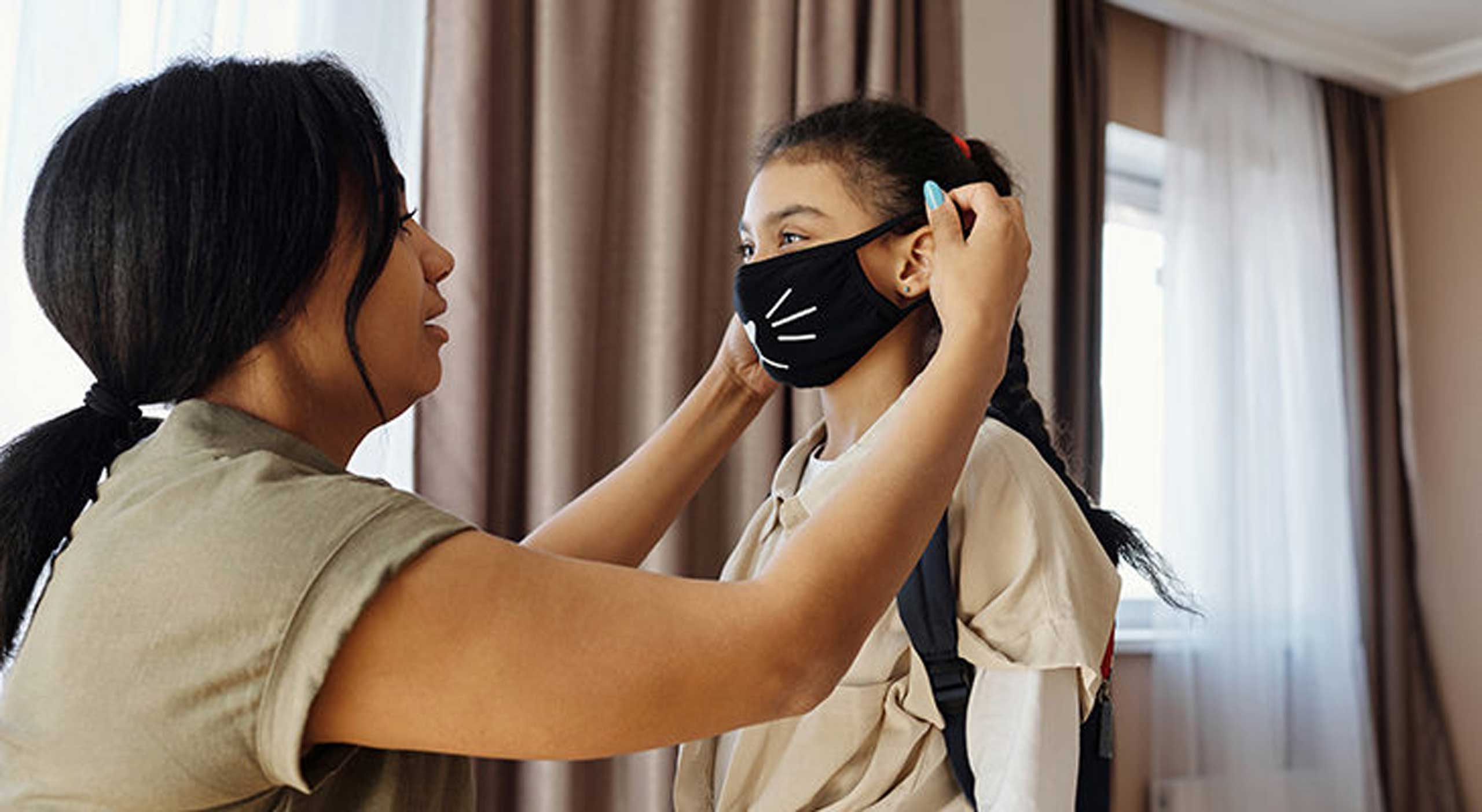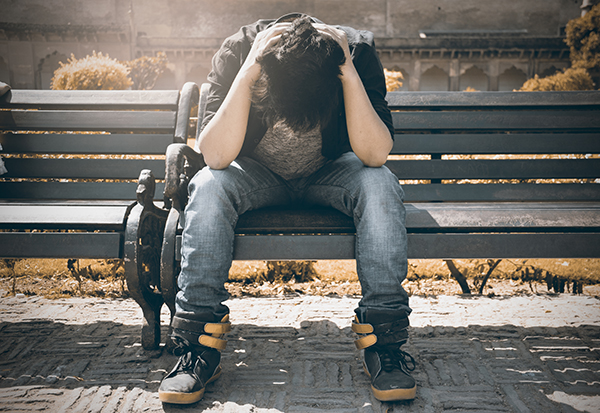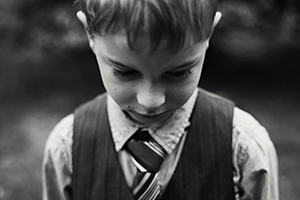
As schools face the many challenges of reopening during the COVID-19 pandemic, a clinical psychologist shares ideas for maintaining social and emotional health for students, teachers, and parents.
The prospect of returning to school this fall has generated contention among school communities as they debate a variety of topics: scheduling, seating arrangements, deep cleaning, mask wearing, remote learning. More aggravation results when districts’ well-developed reopening plans are thwarted by delayed state guidelines. Then there are the disputes between those on different ends of the precautionary spectrum, which ranges from those who think the virus is a hoax to those who wear their masks while driving.
What this all adds up to is stress . . . for students, for teachers, for administrators, and for parents. Because the focus has been on solutions for safely getting kids back to school, the emotional toll exacted by the pandemic has taken a backseat.
What can teachers do to deal with students who have trouble wearing a mask? How can administrators address the concerns of teachers? What about discussions with fellow parents whose perspective on the coronavirus differs from our own?
These are just few of the questions that came up during Legat Architects’ most recent virtual EDengage forum. Our guest speaker Dr. Doug Bolton talked to school district leaders about stress and mental health amid the COVID-19 pandemic. Bolton, a clinical psychologist with Formative Psychological Services in Northbrook, Illinois and former principal at North Shore Academy (a public therapeutic school for students with emotional and behavioral challenges), consults with schools on issues related to social-emotional learning, trauma-responsive practices, and student mental health.

Attachment, Stress Navigation, and Trauma
Bolton acknowledged the fears that come with not having kids in school, particularly because of the relationships they are missing out on. “The power of the school community is unlike any other,” he said. “That 30 hours a week can strengthen children’s social-emotional development, or it can be damaging, especially for kids who have emotional or behavioral problems.”
According to Bolton, children who struggle with these issues face three obstacles: trouble forming relationships and connecting with others, problems with “navigating stress gracefully,” and, in some cases, an inability to cope with trauma they have experienced. Bolten cited a recent study that concluded children who have experienced trauma are 34 times more likely to be identified with learning and behavior problems in school. Educators can serve these students, he said, by helping them attach and therefore become more emotionally regulated.
He also expressed concern about teachers potentially resorting to punitive measures to regain control. When schools choose to punish or isolate students for their behavior, he argued, it can undermine efforts to form attachments and exclude students from important lessons. Even the reward systems that honor academic or behavioral achievements can have a negative impact on students with social-emotional issues.
One issue that teachers worry about is students who have issues with masks or social distancing. Since these are likely the same kids who struggle with directions, Bolton advises taking a more thoughtful approach to addressing these issues. For example, instead of subjecting kids to disciplinary referral for not wearing a mask, why not express curiosity? “I wonder why it’s hard for you to keep your mask on. What do you need?”

The Power of Routine
COVID-19 prevention strategies like quarantining and social distancing have compounded the challenges of our students who struggle to connect. As a result, we see increased stress not only for those students, but also for the adults who are working to support them.
Bolton pointed out that the strongest contributors of how we deal with stress are our sense of control and our ability to predict what will happen next. Thus, when districts develop back to school plans, then state agencies come back with policies that contradict those plans, the result is stress. When parents struggle to control balancing work expectations and helping their children with distance learning, they feel intense stress. Students, unable to control interactions with one another and missing the predictability of the school schedule, have plenty of stress as well—this became apparent when many children had trouble with remote learning.
“When we become dysregulated, we have trouble accessing the part of the brain that allows us to access information,” said Bolton. “This anxiety impedes our ability to focus, problem solve, take other people’s perspective, and remember.”
To combat stress, Bolton recommends establishing routines, “which are regulating and make things more predictable.” He also encourages leaders to give students control, even if in small pieces, when so many things are out of control. An example would be giving students some control over their assignments. He said, “We have to keep kids (and adults) in schools as emotionally regulated as possible to access the whole brain and get the most out of learning.”
Calm Staff Leads to Calm Students
Newark City Schools (Newark, Ohio) understands the importance of social-emotional regulation and self-care . . . so much so that the district hired Wellness Coordinator Ronni Bowyer, who started on March 1. . . . Then the pandemic hit.
Bowyer, who has been working with the district’s social workers and meeting with teachers individually, attested to the importance of modeling behaviors to reduce stress. “It’s very much like the ripple effect when a pebble drops in a pond,” she said. “The attitudes and behaviors administrators have ripple out to support staff, teachers, students, their families, and the community.”
To help staff feel connected and heard, Newark City Schools hosts virtual meetings twice weekly so staff can share concerns and anxieties. Bowyer encourages district leaders not to punish staff, but rather to treat them the way they want the students to be treated.
Bolton concurred with this approach, stating that “the only way students will become emotionally regulated and fully academically engaged is if the adults in their lives are emotionally regulated.” He gave the example of an airplane going through turbulence: if the pilot speaks calmly and the attendants appear relaxed, that sense of calm passes on to the passengers. Thus, it is especially important that teachers set a positive example as students return to school. And teachers cannot do that unless they have some semblance of control.
However, according to Bolton, giving staff more control does not mean administrators have to say “yes” to everything so much as they have to listen to and acknowledge concerns. He said, “The perception of control in some small parts of our lives helps us deal with the loss of control in larger parts.”

Parenting: Can We Be Good with Good Enough?
Bolton stressed that when students return to school, things will be different. “We need to come to terms with the fact that in six months, kids won’t have the same level of academic enrichment they would have had without the pandemic,” he said. “That, however, does not mean things will be irrecoverable—we’re successful as a species because of our ability to adapt.”
Despite the pandemic, many parents still push for the unrealistic goal of having perfect children. Bolton mentioned the “helicopter” or “snowplow” parenting styles that overschedule kids, overemphasize grades, and steer children into high-stress environments. Such strategies increase stress and therefore hamper kids’ ability to learn.
Bolton mentioned pediatrician and psychoanalyst Donald Woods Winnicott, who coined the phrase “good enough parent.” The term refers to parents who acknowledge that neither they nor their children have to be perfect. Bolton, repeating the adage “Don’t let perfect be the enemy of good,” said that adopting this mindset is especially important (and difficult) at a time when delivering the highest quality instruction simply is not possible.
For more information on strong parenting, see the book The Power of Showing Up, by Daniel J. Siegel and Tina Payne Bryson, who point out the Four S’s that children need to feel to thrive: safe, seen, soothed, secure.

When We Disagree
Some families have called off gatherings for the foreseeable future, whereas others host celebrations where social distancing and masks are completely ignored. Much of this is likely attributable to the ways the coronavirus has directly impacted them. Many of us don’t know anyone who has been infected by the virus; others know multiple people who have died because of it. Then there are those who are asymptomatic, which adds to the complexity of the situation.
One EDengage participant asked about how to communicate with parents who may not be taking COVID-19 transmission prevention as seriously as he is. Should he state that he is following CDC guidelines? Perhaps he should enumerate the steps he’s taking to stop the spread of the virus?
Bolton proposed that in their discussions with others with divergent viewpoints, individuals in this predicament should go beyond arguments about whether kids should return to school or whether masks should be worn. In other words, shift the conversation from solutions to values. For instance, “It sounds like we both value student and staff safety and our kids need to be academically and socially engaged. There are no simple solutions, but my hope is that our school community will find a solution that best meets both of these values.”

An Opportunity for Change
The coronavirus pandemic has pummeled communities and households with uncertainty and fear. Bolton said, “We’re trying to find our way when there is an invisible, potentially lethal risk in every person we see, every object we touch, and every room we walk into—this is dysregulating for everyone.”
Nevertheless, he argued, COVID-19 and its fallout have presented opportunities to rethink the educational system. Bolton contends that it starts with adults being gracious with one another and setting the stage for a healthy dialogue. Then, perhaps, there are ways for children to establish new connections beyond school, or for booster clubs to move beyond sports.
Those who survived the Great Depression and World War II were called the Greatest Generation because of their resiliency. Now, amid a pandemic and economic instability, Baby Boomers, Generation X, and millennials have a chance to unite and show Gen Z what it means to be resilient.
“A beautiful way of thinking about wellness and emotional regulation is that it’s contagious. . .” said Bolton, “. . . even more contagious than COVID-19.”
Contact us or comment below to share your thoughts on this post.


